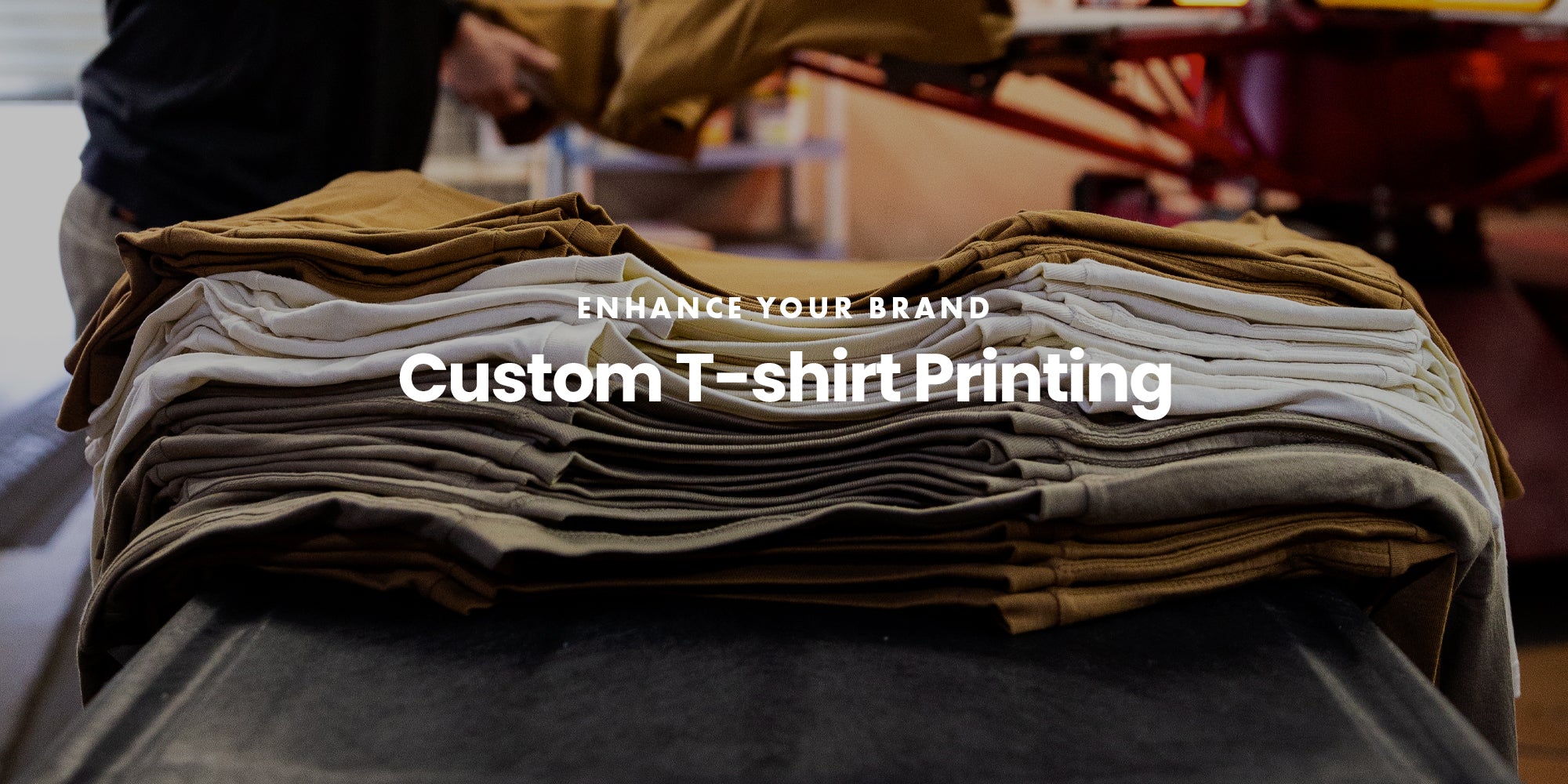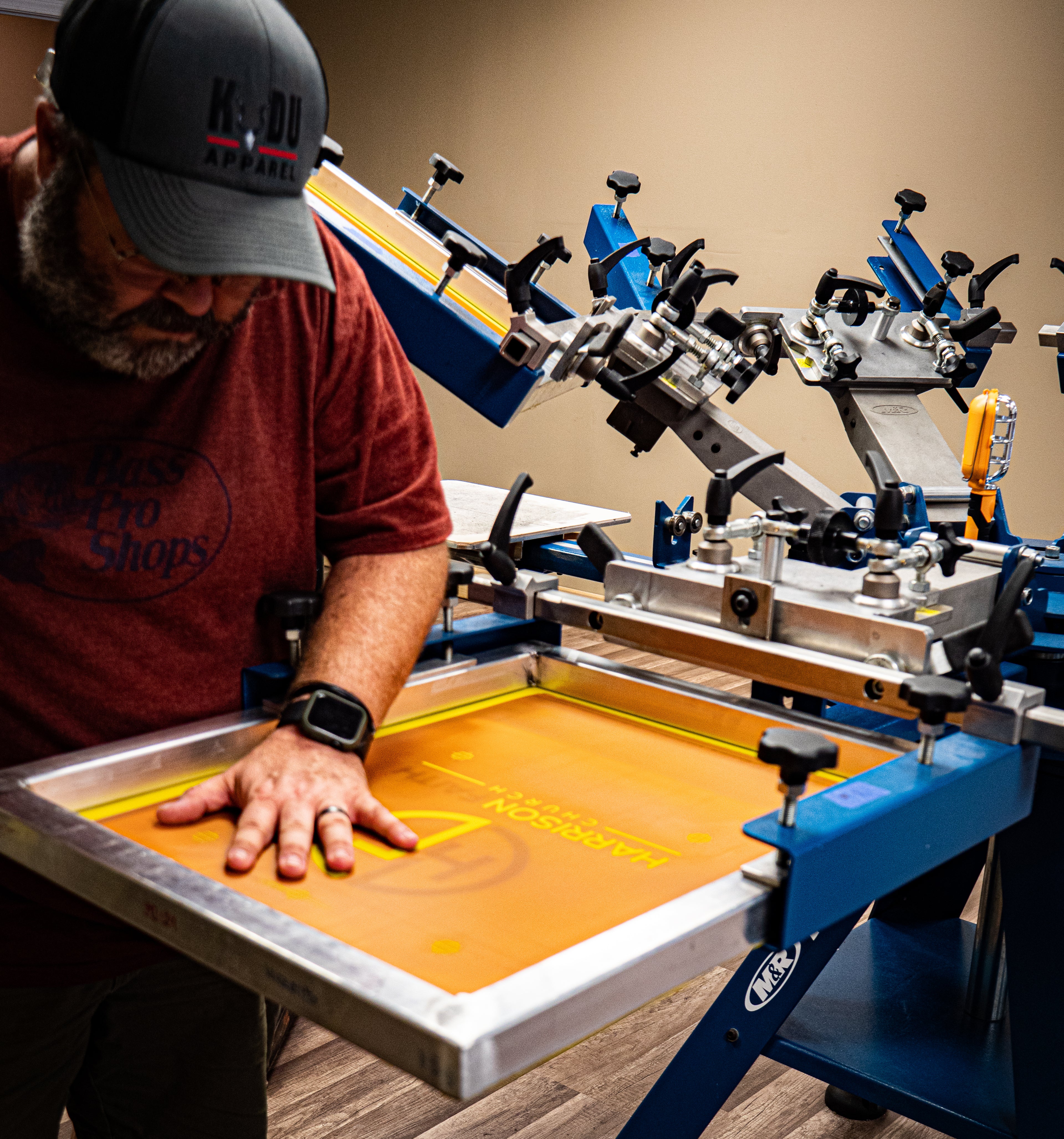Screen Printing Uncovered: Whatever You Required to Find Out About Tee Shirt and Garment Printing Techniques
If you've ever asked yourself how those vibrant styles wind up on your favored tees, you remain in the ideal place. Screen printing is a fascinating method that integrates art with technique, providing unlimited possibilities for imagination. Recognizing the fundamentals, from equipment to ink selections, can greatly affect your outcomes. Ready to discover the necessary aspects that make screen printing an art type? Allow's discover the details that can elevate your jobs.
The Essentials of Screen Printing: How It Functions
When you dive right into screen printing, you'll discover it's both an art and a scientific research. At its core, display printing entails producing a pattern, or display, that allows ink to pass with only in specific areas (screen printing kit). You begin by picking your layout and preparing your display with a light-sensitive solution. When you expose this emulsion to light, it sets, leaving your style as a negative area.
Following, you'll mix your inks and prepare your printing surface area. Position the display over the fabric, after that use a squeegee to push ink through the display onto the garment. This process needs accuracy, as you want clear, vibrant prints. After printing, you'll treat the ink with heat, ensuring it sticks to the material and lasts via laundries. Each action is necessary, and understanding them will boost your display printing skills, changing basic garments into special, meaningful pieces.
Kinds Of Screen Printing Methods
Once you understand the fundamentals of display printing, it's time to discover the various techniques that can raise your styles. One prominent method is conventional display printing, where ink is pushed with a stenciled display. This strategy is terrific for vibrant, vivid shades. There's water-based ink printing, which uses a softer feel and is eco-friendly, however it needs a different strategy to healing.
Another option is plastisol printing, known for its resilience and dazzling shades, making it a preferred for several brand names. Experiment with halftone printing to create slope effects and elaborate styles.
Essential Tools for Screen Printing
To achieve spectacular outcomes in screen printing, having the best devices is essential. You'll require a durable display printing framework, which holds the mesh that moves your style onto the garment. Next off, spend in top notch mops; these are crucial for applying ink evenly across the screen.
Choosing the Right Inks and Materials
When selecting inks and products for display printing, you need to think about the sort of ink that functions ideal for your task. Consider fabric compatibility to guarantee your designs look last and terrific lengthy. Additionally, discover eco-friendly ink options to make your printing procedure a lot more sustainable.
Kinds Of Screen Inks
Choosing the ideal screen ink is essential for achieving vivid, sturdy prints that satisfy your task's requirements. There are a number of sorts of display inks to analyze. Plastisol ink is prominent for its versatility and convenience of usage, providing outstanding color opacity on dark textiles. Water-based ink, on the other hand, supplies a softer feel and is environment-friendly, making it perfect for those looking to decrease their ecological effect. Release inks eliminate color from the material, causing a soft, classic look however require certain handling. Lastly, specialty inks, such as glow-in-the-dark or metal, can add one-of-a-kind results to your designs. Review your task requirements and choose the ink that aligns finest with your desired end result.

Textile Compatibility Factors To Consider
Understanding fabric compatibility is vital for accomplishing high-quality display prints, especially given that various materials respond distinctly to various inks. When picking inks, consider the textile kind-- cotton, polyester, or blends. For cotton, water-based inks function well, using soft qualities and breathability. Polyester, on the various other hand, frequently calls for plastisol inks for much better bond and vibrant colors. You may need to use a mix of both kinds if you're publishing on blends. Constantly evaluate your inks on sample material to assure they adhere effectively and maintain color honesty. Furthermore, keep in mind that textile weight and appearance can impact the last outcome, so choosing the ideal ink and product combo is important for your job's success.
Eco-Friendly Ink Options
Environment-friendly inks are coming to be a popular option for display printers who intend to decrease their ecological effect while keeping high quality. When picking inks, take into consideration water-based inks, which are less unsafe and easier to tidy up compared to conventional solvents. These inks bond well with textiles, delivering dynamic outcomes without hazardous chemicals. You might additionally explore eco-solvent inks that make use of fewer unpredictable natural compounds (VOCs), making them a much safer choice for both your wellness and the world.
In addition, look for inks made from renewable energies, such as soy or vegetable-based choices. By picking the best inks and products, you'll not just develop sensational layouts yet likewise add to a more lasting printing process. Make the button, and your prints will show your commitment to the setting!
Preparing Your Layout for Display Printing

File Format Needs
To assure your layout looks sharp and dynamic on fabric, you'll require to pay very close attention to file format requirements for display printing. Beginning with vector files like AI or EPS, as they can be scaled without shedding quality. If you utilize raster photos, go with high-resolution files, such as TIFF or PNG, ideally at 300 DPI. Stay clear of utilizing JPEGs, as they can lose clarity when resized. Make certain your style has a clear background to protect against undesirable white sides on your prints. Lastly, keep color settings in mind; CMYK is conventional for screen printing, so convert your RGB develops as necessary. By complying with these standards, you'll establish your art work up for a successful print.
Shade Splitting Up Strategies
Color splitting up is a necessary action in preparing your design for display printing, and grasping it can significantly boost your print quality. You'll require to break your layout into specific shades, as each color calls for a separate display during printing. This accuracy not just guarantees precise shade depiction yet additionally improves the printing procedure.
Resolution and Size
Attaining the most effective cause screen printing starts with assuring your design has the appropriate resolution and dimension. more tips here Preferably, your artwork must go to the very least 300 DPI (dots per inch) for sharp, clear prints. Your last product may look less than professional and pixelated. if you use reduced resolution.
When it comes to size, take into consideration the measurements of your print area. Layout your art work to match the last print size, preferably producing it in the real measurements you'll be printing. he said This way, you'll avoid any type of unanticipated scaling issues.
Always inspect your style in both vector and raster layouts. Vector graphics can be scaled without losing high quality, making them excellent for screen printing. Preparing correctly will ensure your style looks incredible on every garment!
Step-by-Step Screen Printing Process
Screen printing is a dynamic procedure that allows you to create vivid layouts on different surfaces. To get started, you'll need a screen, emulsion, and your chosen ink.
After cleaning out the unexposed emulsion, your screen is ready. Establish it up on your printing surface area and align your garment below it. Pour ink onto the display and utilize a squeegee to push the ink via the stencil onto the textile. Raise the screen very carefully and allow the print completely dry. Heal the ink utilizing warm to guarantee durability. That's it! You have actually effectively screen published your style.
Tips for Successful Display Printing Projects
While you're diving into your screen printing jobs, keep in mind that prep work is crucial to success. Beginning by collecting all your materials-- inks, displays, squeegees, and garments. A tidy office helps prevent undesirable errors, so clean before you begin.
Following, verify your art work is high-resolution and correctly sized for your garment. Test your display for appropriate exposure and tidy it thoroughly to prevent spots. When mixing your inks, adhere to the producer's standards to achieve the best uniformity.
Throughout printing, apply also stress with your squeegee for consistent results. Do not rush; take your time to confirm each print fulfills your standards. After printing, let your garments dry completely before taking care of or packaging them.
Lastly, always maintain a sample of your benefit future recommendation. In this manner, you can assess your progression and improve your strategies with time. Satisfied printing!

Regularly Asked Inquiries
The length of time Does It Require To Establish up a Display Printing Task?
Establishing a screen printing job normally takes around thirty minutes to an hour. You'll prepare the displays, mix inks, and change the press. The moment differs based upon intricacy and experience, so remain organized!
Can I Publish on Various Textile Keys In Making Use Of the Exact Same Technique?
Yes, you can print on various fabric kinds utilizing the exact same technique, yet you'll need to readjust your inks and setups. Some fabrics absorb ink differently, so experimenting guarantees the very best outcomes for each product.
What Are Common Mistakes to Stay Clear Of in Screen Printing?
When display printing, prevent common blunders like making use of the wrong ink, neglecting correct exposure times, or skipping pre-press checks. Constantly examine your configuration and maintain clean displays to ensure high quality results each time.
Just How Can I Correctly Tidy and Maintain My Display Printing Devices?
To correctly tidy and maintain your display printing equipment, you need to frequently clean screens with ideal solvents, check mops for wear, and ensure all devices are kept completely dry and dust-free. Uniformity stops pricey repairs and improves efficiency.
Is Screen Printing Eco Friendly Contrasted to Other Techniques?
Display printing can be more ecologically pleasant than other techniques, specifically if you use water-based inks and eco-conscious products. By choosing lasting products and practices, you minimize waste and decrease your impact on the earth.
Screen Read Full Article Printing Uncovered: Whatever You Required to Know Concerning Tee and Garment Printing Techniques
At its core, display printing entails developing a pattern, or screen, that allows ink to pass through only in details areas. Position the screen over the textile, then utilize a squeegee to push ink with the screen onto the garment. One prominent approach is traditional screen printing, where ink is pushed through a stenciled display.When picking inks and materials for screen printing, you need to take into account the type of ink that works finest for your project.
Comments on “Beginner-Friendly Screen Printing Kit for DIY Projects”